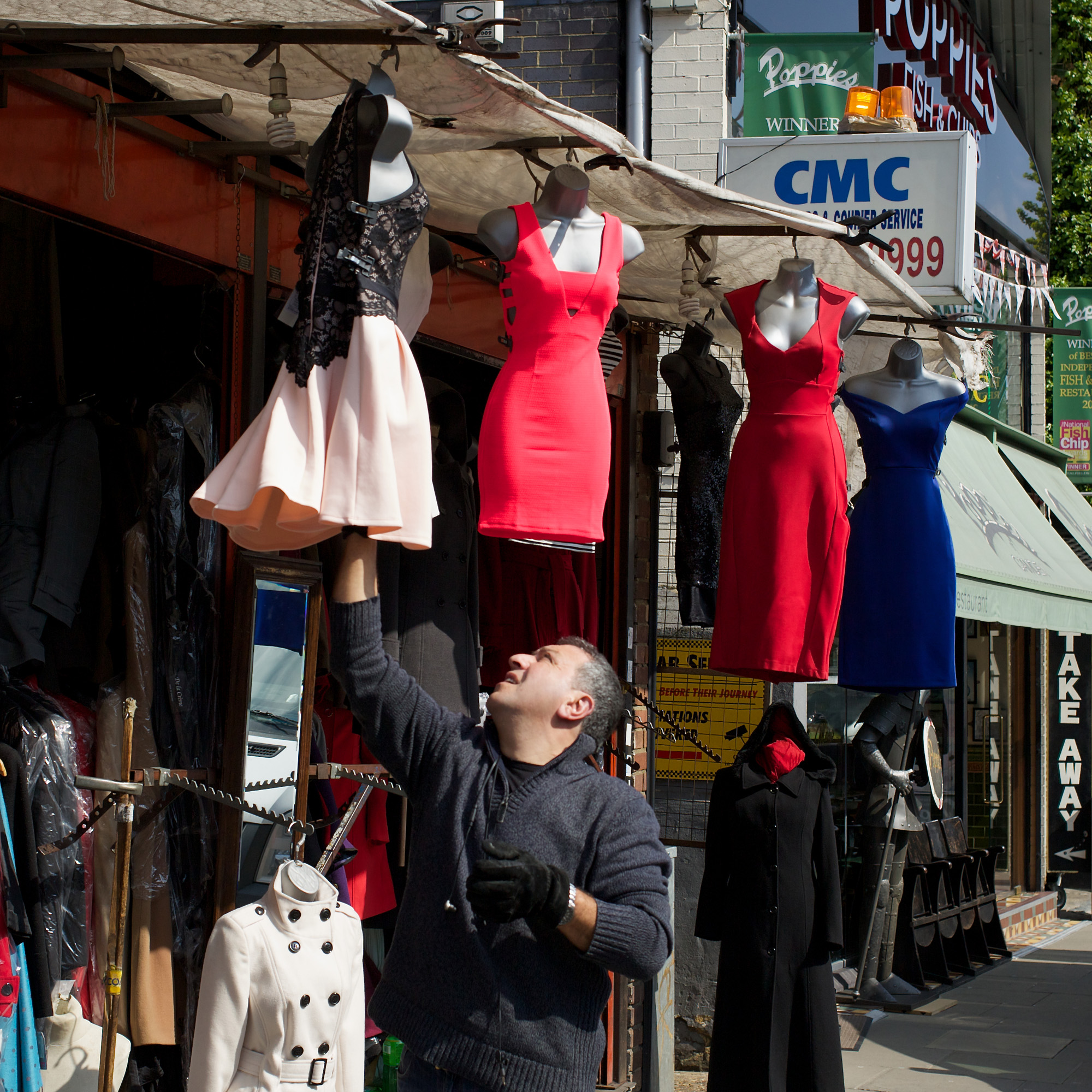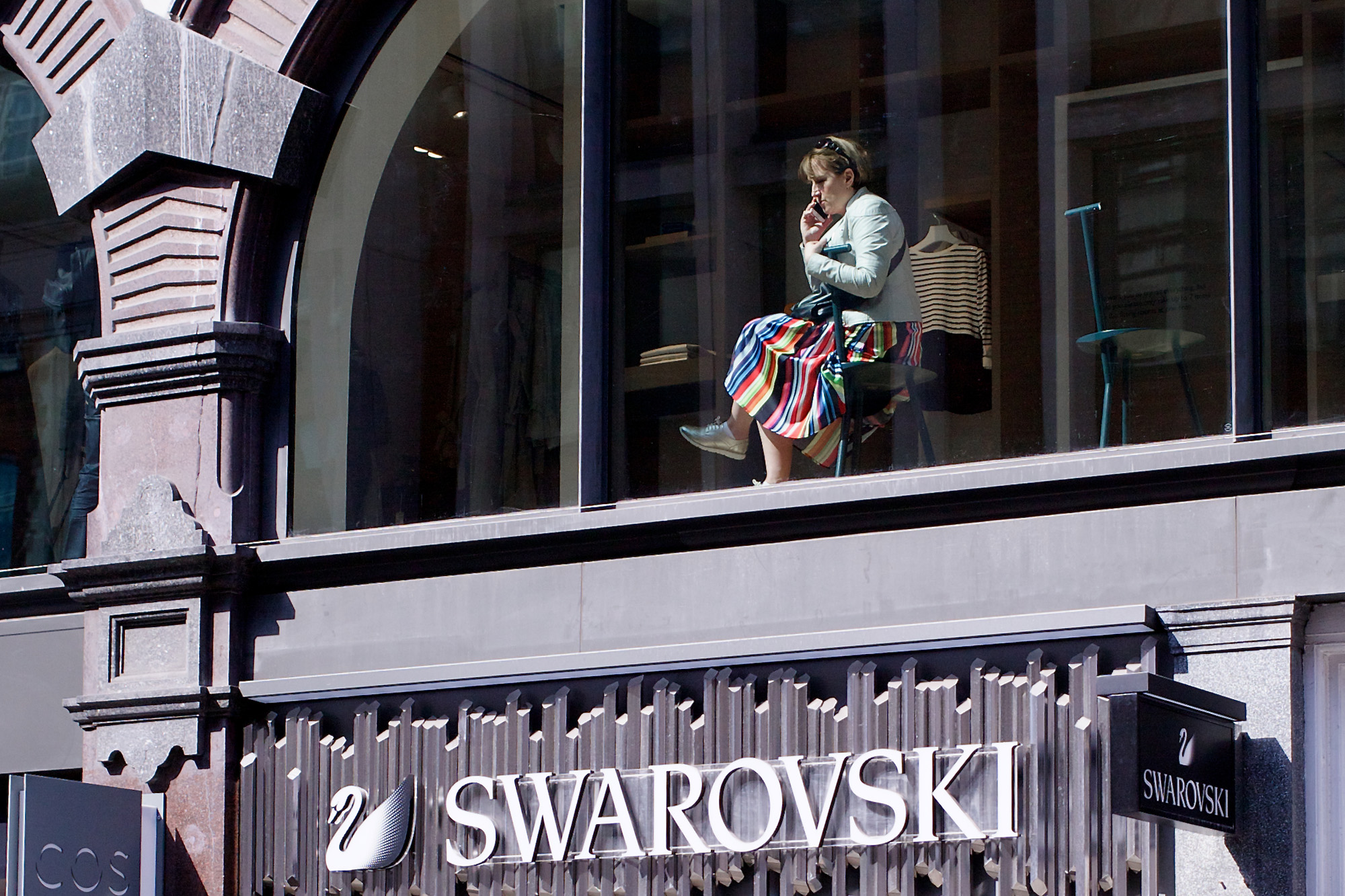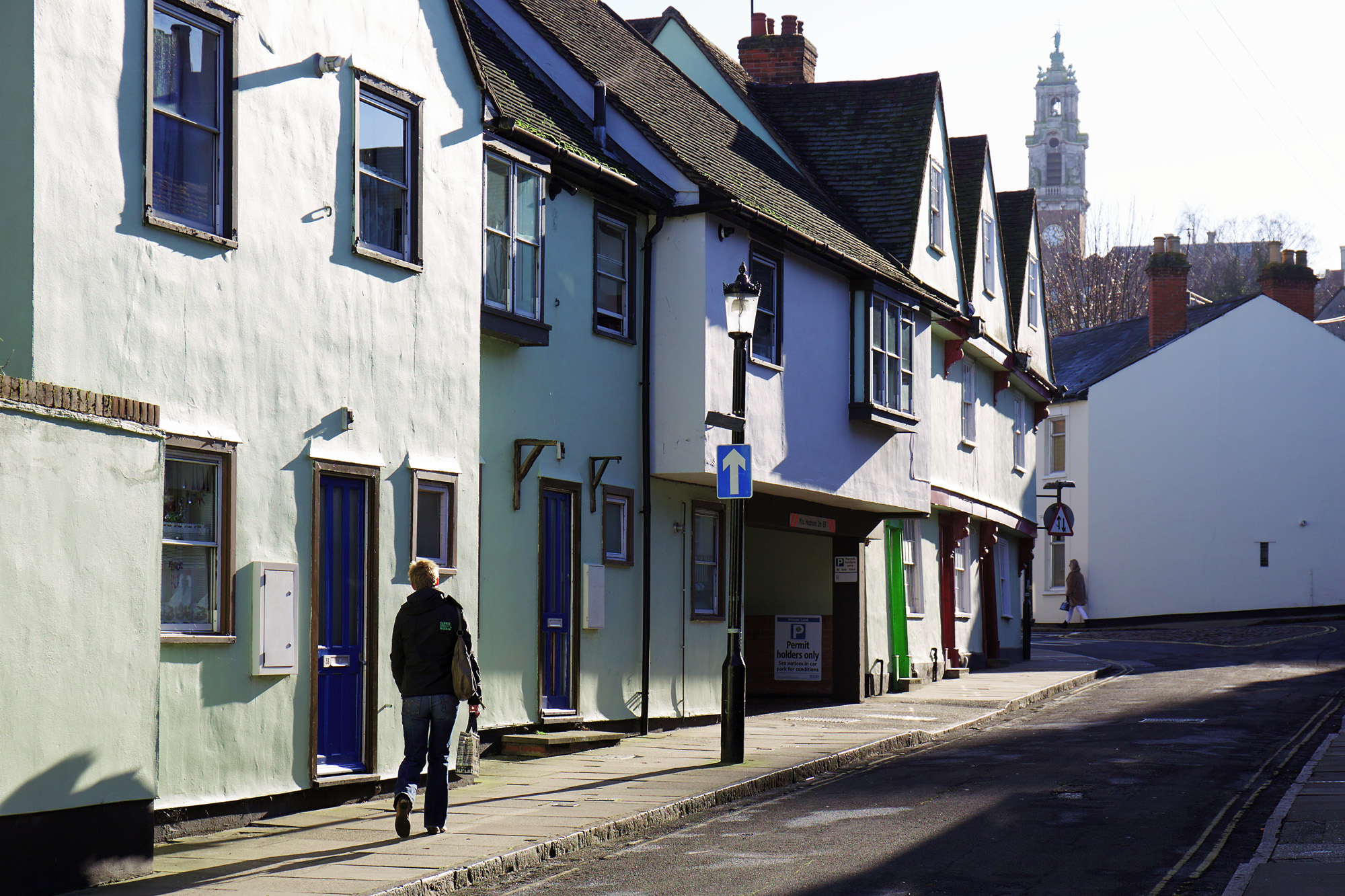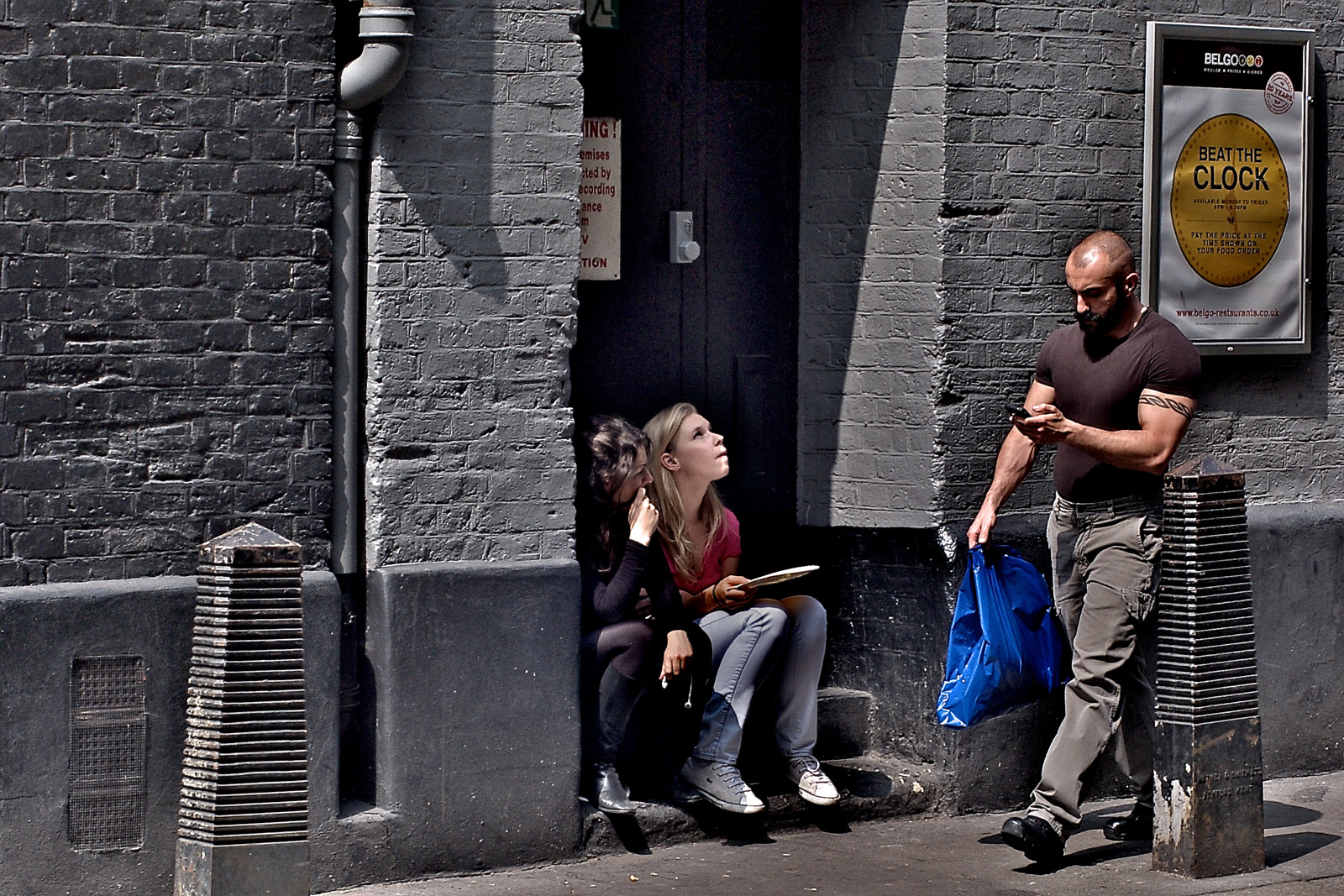If you try to find an exact word to describe the humour of the French comic artist Jacques Tati (1907-1982) you’d probably be most accurate with the English word “dotty.” I prefer it to “whimsical,” or “wistful,” or even “bumbling” — all of which spring to mind, but which seem to place too much emphasis on the person and not enough on the humour.
Tati’s humour is all about the ordinary “man in the street” who is living — and trying to survive in — a world gone slightly dotty. In movies such as “Traffic,” “Mon Oncle,” “Monsieur Hulot’s Holiday,” and above all “Playtime” he explores what the film review site Rotten Tomatoes calls “the infinite mysteries of the modern world.”
When I walk around the streets of modern towns and cities taking street photos I’m constantly reminded of the wonderfully inventive humour of Jacques Tati. Even my current hometown, Colchester, becomes more Tatiesque day by day. A couple of years ago the council installed two cut-out metallic elephants in the High Street, making it more difficult to cross the road to get to the Post Office. Last year they gave us a seven-foot-high sculpture of a running woman who bears a striking resemblance to ousted South Korean president Park Geun-hye. Just what we needed!
Absurdification
Writing about Tati’s 1967 film “Playtime” in “The Guardian” newspaper, Jonathan Romney says: “Tati creates a universe entirely defined by absurdism.” Whereas “Mon Oncle” (1958) showed Tati “scratching his head at the excesses of gadget-crazed lifestyle-modernism,” the later film “pushed the observation of contemporary life further” and placed him in a city where modern design interferes maliciously with every aspect of the inhabitants’ lives.
Half a century later, the absurdification of modern cities is more advanced than ever. If we see a man chattering away to himself while slouching along the street — head down, hands in pockets — we no longer feel sympathy. We just assume he’s using the latest, cordless iPhone. Nine times out of ten we’d be right.
In Singapore, whole areas have been sacrificed to modern design and the entire city is headed in the same direction. It’s a strange process: a vicious circle of self-fulfilling prophecy. Artists and architects tune into the zeitgeist (the spirit of the age) and echo it in their work. In turn, their creations reinforce the zeitgeist to such an extent that everyone becomes governed by it in their daily lives.
That Awkward Moment
For example, take the image immediately above. It shows a public space outside a cinema in Singapore. It’s populated with a surfeit of street lamps — far more than necessary — which assume crazy, twisted shapes, arranged around trees in groups of five. Beneath them are some hard, stone benches that are positively hostile to the user’s comfort, each one designed to hold three people.
The couple in my photo (if they are indeed a couple) look ill at ease. Maybe they’re on a first date. The man reaches into his pocket and stares at the bare paving stones in front of him. Perhaps they’re waiting for a third person to turn up.
I was delighted to see that the film being shown was “That Awkward Moment.” To find a poster with the word “moment” is a gift for the street photographer, let alone the word “awkward” in such a location — at such a moment.
Oh, My Poor Little Feet
As you move around Singapore, the city becomes curiouser and curiouser. It’s long been among the first to get the latest architectural fad, such as vertical gardens and artificial trees. Then there’s the iconic Marina Bay Sands hotel with its three towers spanned by a ship-like structure. To cap it all, Louis Vuitton chips in with a steel and glass space ship where you can buy a new suitcase, if you’re thinking of going somewhere else.
Personally, I love the dottiness of it all, but that’s because I walk around taking street photographs. If I was a citizen trying to live a normal life in these theatrical surroundings I think I might become as eccentric as Monsieur Hulot appears to be. I might start wearing a skull and crossbones on my back, like the girl in my featured image at the top of this article.
At Clarke Quay, one of the most theatrical areas of Singapore, I noticed this girl who was wearing a striking tee-shirt with a skull and crossbones motif. I was so fascinated by her I almost forgot to take the photo. By the time I pressed the button she had receded into the middle distance — where she was obliged to walk around the huge three-legged structures (lights? loudspeakers? surveillance cameras?) in between the open-air restaurants.
Immediately, I was reminded of Jacques Tati zig-zagging his way through the garden of the ultra-modern home where he’s staying in “Playtime,” forced to walk those extra steps because of the absurd design of the pathway. All our lives are now governed by our inventions and environments. As the trailer proclaimed: “Whatever your personality, whatever your job…you are in Playtime.”
If you’re a street photographer– or if you just like looking at street photos — I urge you to get a copy of Tati’s greatest film. It sank into obscurity until its revival in 2014, having never been on general release in the United States. When you view it I’ll think you’ll agree. We’re all in Playtime now.























